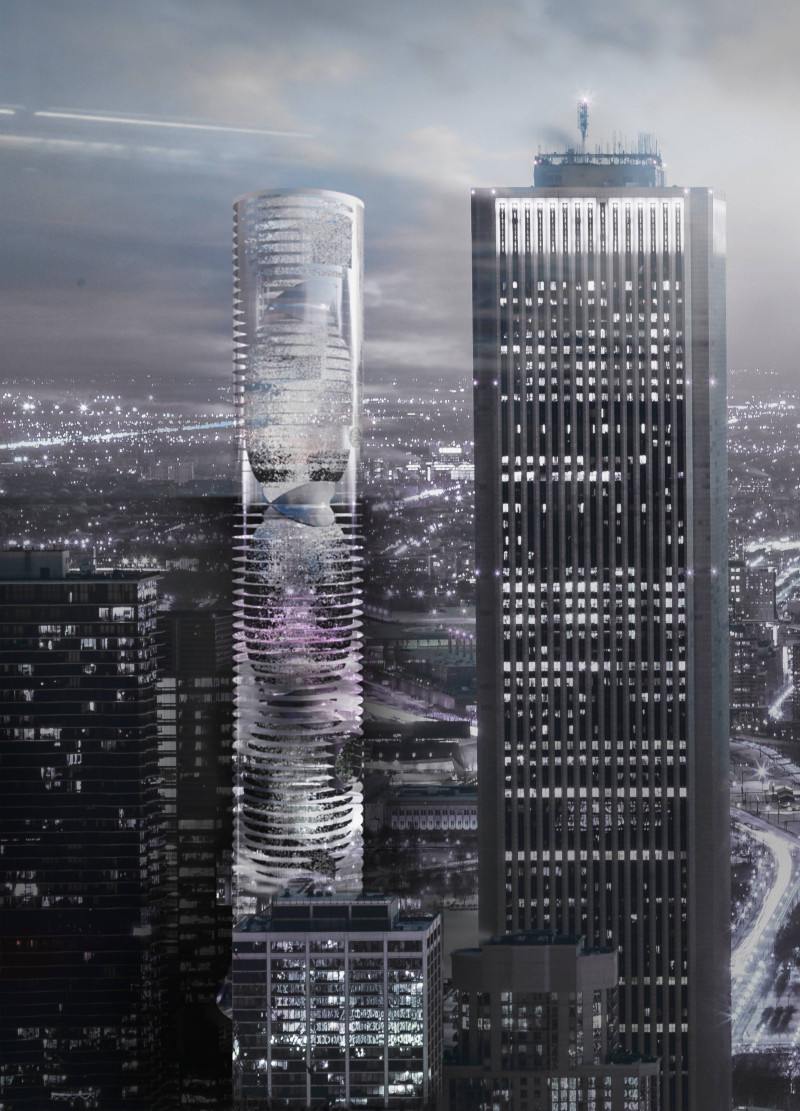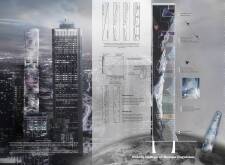5 key facts about this project
The project presents a new approach to educational spaces, focusing on flexibility and active learning. It is designed as a skyscraper that stands out in its urban environment, serving as a center for cognitive development. The overall concept aims to enhance access to knowledge while encouraging more interactive and engaging educational experiences.
Dual Magnetic Fields
The building consists of two parts, each defined by a specific magnetic field. One side has a vertical magnetic field, while the other features a horizontal magnetic field. This arrangement not only organizes the interior spaces but also allows for different teaching methods to coexist. The design promotes the idea that a versatile learning environment can better prepare individuals for challenges in a rapidly changing world.
Meteorological Circles
A notable feature of the design is the inclusion of meteorological circles, which are crafted to simulate a variety of weather conditions. Up to thirteen different types can be accommodated, providing students with hands-on learning opportunities. This setup encourages learners to engage with environmental concepts in a meaningful way, facilitating a connection between their education and real-world climate issues.
Replaceable Tubes
The design also incorporates replaceable tubes that can fit into any meteorological circle. This innovative feature adds flexibility to the space, enabling the creation of customized experience centers tailored to specific educational goals. It highlights the importance of adapting the learning environment to meet the diverse needs of students, making education more relevant and personalized.
In the center of the building, the Future College of Human Cognition serves as a key area for collaboration and exploration. This space incorporates thoughtful design elements, inviting students to pursue knowledge actively within a carefully constructed environment. Each detail contributes to an atmosphere that supports inquiry and discovery.


















































